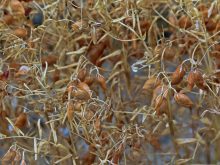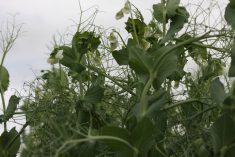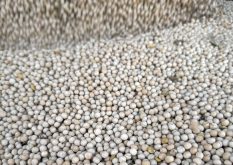WINNIPEG — Murad Al-Katib built his business on lentils, peas and other pulse crops.
However, the president and chief executive officer of AGT Food and Ingredients is feeling especially bullish about oats.
Last year AGT opened an oat milling plant in Aberdeen, Sask., with the capacity to process 36,000 tonnes of oat groats.
Al-Katib is already thinking about expanding the plant.
“We commissioned that (plant) in 2023 … and we’re sold out…. One year into a value-added manufacturing plant in Saskatchewan and we’re sold out,” he said Jan. 10 at the SaskOats annual general meeting in Saskatoon.
Read Also

VIDEO: Catch up with the Western Producer Markets Desk
The Western Producer Markets Desk provides daily updates on agricultural markets, with recent video commentary including looks into canola, wheat, cattle and feed grains.
“We’re (now) talking about doubling the capacity.”
AGT, which has its headquarters in Regina, is one of the largest suppliers of value-added pulses and food ingredients in the world. It has about 3,000 employees and operates more than 40 processing plants in Canada, the United States, Australia, Turkey, Kazakhstan and South Africa.
Last year, AGT’s global revenues were around $3 billion, Al-Katib said.
He wants AGT to be more than a commodity company, and oats fit neatly into that goal.
Western Canadian oats have an extremely bright future, possibly as a food that people eat throughout the day, he said.
“I think that’s where the big opportunity is … it’s snacks. People want to snack and want to feel better about what they’re eating,” he said.
“To me, oats is not about cereal. It’s not about porridge…. There’s going to be a lot more to do with oats.”
Most of the oats processed at the Aberdeen mill are staying in North America, but the lion’s share is being shipped by rail to Mexico.
“The consumption of oats in Mexico (is) exploding,” Al-Katib said.
“It’s a traditional food. It’s relatively cheap.”
Northeast of Aberdeen, another miller is also feeling optimistic about oats.
Brett Casavant is CEO of C-Merak Industries, which processes oats and fababeans in Tisdale, Sask.
In 2018, Casavant founded C-Merak to add value to the crops grown on his farm.
C-Merak uses a dry milling process to produce protein concentrates, flours and other food ingredients, says a company news release.
The company packages the flour, which is available at Co-op grocery stores across Canada.
C-Merak also produces the basic ingredients for oat milk.
“The growing and milling happens in Tisdale at our mill. Then it gets shipped into Saskatoon at the food centre, where Sonic Milling has a wet process where they make (an) oat beverage,” Casavant said at the SaskOats meeting.
“I think that (oat milk) is really going to grow the production of oats and where oats are going to go in the future.”
For now, Casavant only processes oats that are grown on his farm. He may soon contract production and expand the capacity of the Tisdale mill.
Like Al-Katib, he envisions a future where oat milling and processing is a much larger industry in Western Canada.
A Cereals Canada report on the economic value of wheat, barley, durum and oats found that oats generated annual revenues of $4.2 billion.
About $1.87 billion of that total is growing oats. Milling and processing represents $1.95 billion, Casavant said.
“As we grow the acres and mill more here, the two can grow in unison,” he said.
“There’s so much more opportunity to mill at the source, in Saskatchewan especially.”
Al-Katib, who knows pulse crops, believes there’s a massive opportunity to utilize the benefits of oats with lentils, peas and chickpeas.
Pulses fix nitrogen, improving the sustainability of the crop rotation.
And oats have a neutral flavour, which could offset the “beany” taste of pulse proteins.
“The pulse proteins have sensory issues…. Some people don’t like that taste,” says Sijo Joseph, an Agriculture Canada scientist in Manitoba who studies the compounds in cereals and other crops that could have benefits for human health.
“(And) if you mix pulse protein with oat protein, you get the complete amino acids.”
Al-Katib sees a future where pulses and oats are processed and marketed as a food ingredient.
“I think oats and pulses, as flours and concentrates together, are going to make an affordable combination,” he told farmers at the SaskOats annual meeting.
“As an oat grower, I want you to love pulses (because) we’re going to combine them with oats and sell a lot of them.”


















